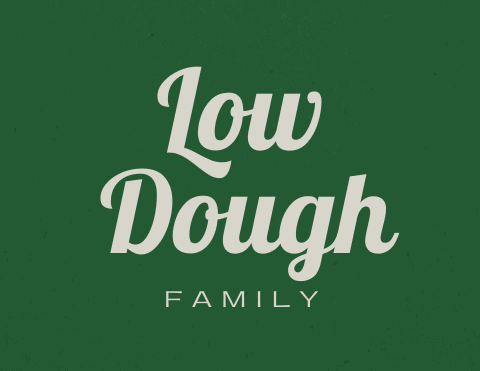1.4 Price Per Unit & Comparison Shopping
Welcome back, everyone! Today, I want to talk about one of the most overlooked skills in grocery shopping: deciphering price tags or how to look at price per unit. It may seem deceptively simple, but it can actually get quite complicated.
You may be on the lookout for sales, but are you really getting the best deal? Let’s learn how to read between the lines and see if that sale price is worth it.
Key Takeaways
- Understanding price tags and decoding unit price can help us make informed decisions and find the best value for our money.
- Personal preferences, storage conditions, and serving sizes can impact the reliability of price tags and the accuracy of unit price calculations.
- Beware of misleading packaging and always compare unit prices before adding items to your cart.
Understanding Price Tags
Deciphering price tags can be a challenging skill to master, but it’s an essential one to have when grocery shopping. Sales signs can be deceiving, and it’s crucial to know how to read between the lines to determine if a sale price is worth it. The key to understanding price tags is the unit price.
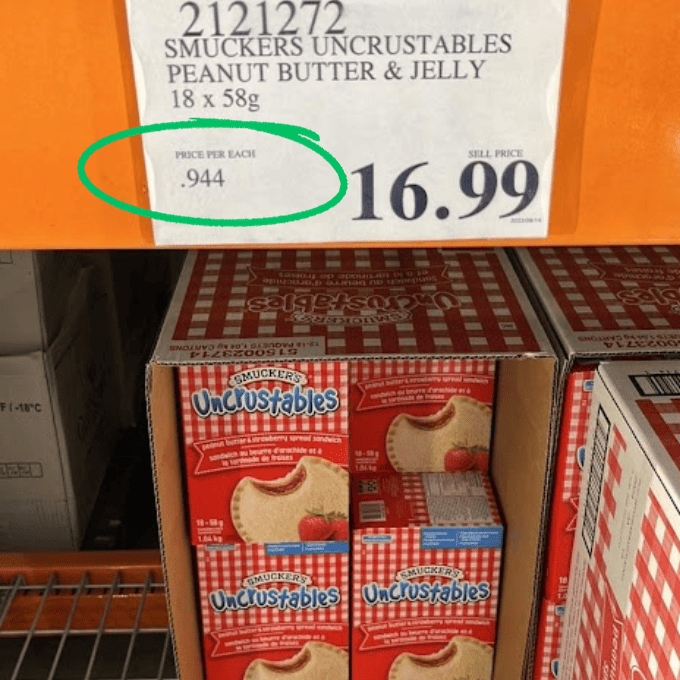
The unit price is the cost per unit, and the unit can be ounces, pounds, pieces, or a variety of other measurements. To find the price per unit, you simply divide the total cost by the quantity. For example, if a pack of Uncrustables costs $16.99 for 18 sandwiches, the price per unit is $0.94.
However, things can get more complicated when an item doesn’t have a specific unit. For instance, Captain Crunch cereal lists the price per unit as $29.8, which was calculated by dividing the total price by the weight.
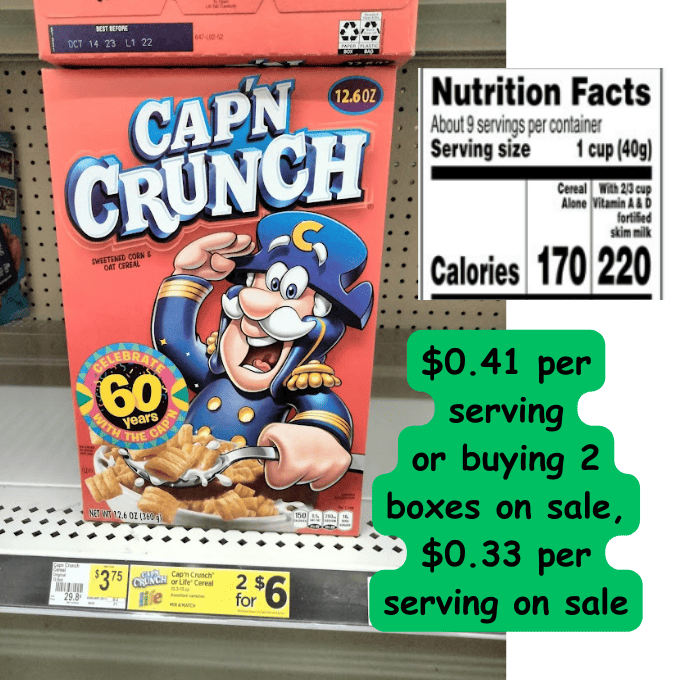
But, most people don’t eat cereal based on weight; they eat it based on serving size. So, to determine the price per serving, you need to divide the total price by the number of servings.
This 12.6oz box of cereal has 9 servings, so we take the price of $3.75 and divide it by 9 servings. This gives us a price of $0.41 per serving.
(If we bought two boxes at the sale price of $6.00 and divide by 18 servings, the price per unit is now $0.33 per serving.)
It’s important to note that serving sizes can vary, so you need to determine your own normal serving size. This will help you get an accurate price per unit and make informed price comparisons.

Additionally, not every item comes in just one size, and sometimes buying a smaller package can be more cost-effective.
In the rice example, we look at 3 different packages of the same rice. We have a 1lb bag, 2lb bag, and a 5lb bag.
Since the one pound bag is on sale, it is actually cheaper to buy five 1lb bags of rice than it is to buy just a 5lb bag.
If the one-pound bag was not on sale, the price per pound would actually be the same for all 3 sizes, so then you would just buy the amount you will need.
Complexities in Price Per Unit Calculation
When it comes to grocery shopping, deciphering price tags can be a daunting task. While unit price can be a helpful tool, it can also get complicated. Let me explain some of the complexities.
So far we have looked at unit price being calculated by:
- number of items in package
- serving size
- by the pound
There are actually a lot of different ways to calculate price per unit and it varies based on the product.
Price Per Unit in Different Package Sizes
Let’s take a look at some tricky prices per units to fully understand how to do effective price comparing.
First, let’s look at some boxes of instant mashed potatoes. My local Walmart typically offers 3 different sizes and none of them are nice whole numbers like pounds.
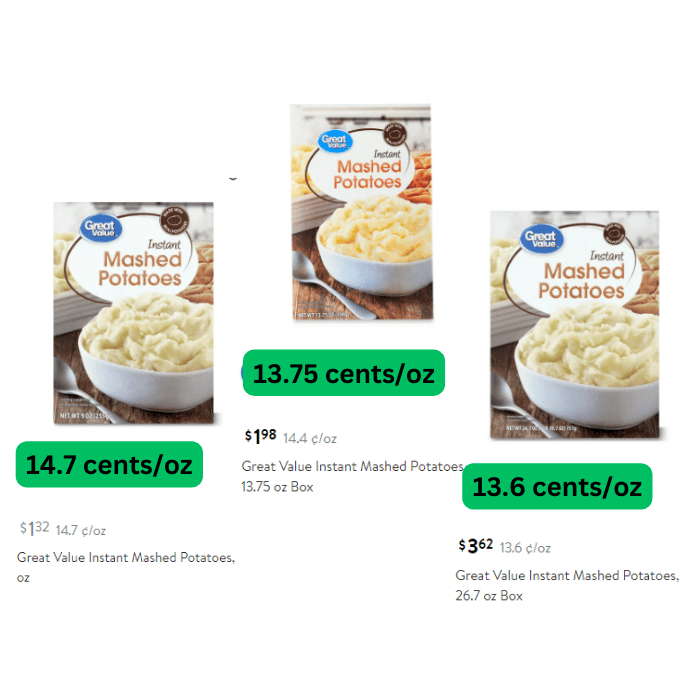
At first glance, it may seem obvious that the larger 26.7oz box is the best deal. But what if you don’t eat instant mashed potatoes very often or don’t have a spot to store this really big box?
We have to keep in mind that price per unit is great to make a decision based on lowest price, but we still have to balance it with usage and storage.
Next, let’s look at frozen pancakes. Both of these boxes look very similar in size, so this would be a great example of confusing packaging.
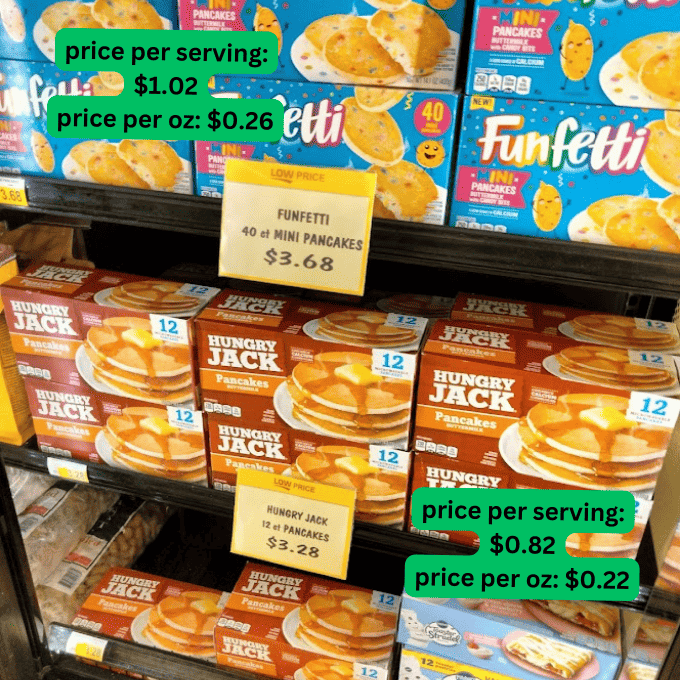
In this case, we are comparing mini sized pancakes and full size pancakes. If we try to calculate the price per serving, we will notice that the box of mini pancakes only has 3.6 servings ($1.02 per serving)
Whereas the full size pancakes have 4 servings for $0.82 per serving. This gets harder when I know that my kids would never eat 11 mini pancakes in a single breakfast.
So if we can’t compare servings on this one, the next best option is to look at the total weight of the package.
The mini pancakes weigh 14.1oz for a price of $0.26 per ounce. The full size pancakes weigh 14.8oz for a price of $0.22 per ounce.
To me the better deal would be the full size pancakes, because I am getting more pancakes by weight for a better price.
Every store that sells food is required to have a price per unit on the packaging, but no where does it say the unit that they pick has to be helpful!
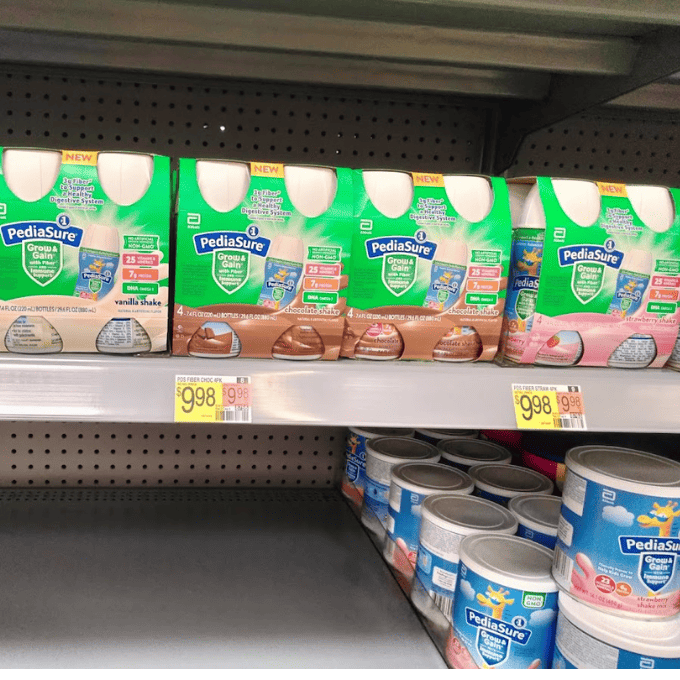
Perfect example of this is a 4 pack of Pediasure. The cost of a 4 pack is $9.98 and the tag shows the price per unit is $9.98.
Walmart has decided that calculating the price per total package was the easiest so that is what they used on their price tag.
A more helpful price per unit would have been the price per bottle. Since Pediasure can come in multiple packaging sizes like 4, 6, 12, 24, and so on.
So, in this case, the price per bottle would be $2.49. If I was comparing the prices on multiple sizes packaging, I would need to look for a price per bottle that was lower than $2.49 to find the best deal!
Be mindful of the packaging as well as the sizing. Don’t always go by the unit price listed on the price tag, go with a per unit price that makes sense for you and your family!
Impact of Personal Preferences and Storage Conditions
Keep in mind the following options when calculating price per unit for your family:
- Who will be eating it and how much do they typically eat in a serving.
- Is this an item that you have had before and know that your family will eat it?
- Do you have enough storage space for the largest package?
- Will you eat this item before it goes bad or gets stale?
By asking yourself these questions, you can avoid some pitfalls if you only look at price per unit. Price per unit is just one decision making factor in getting a good deal!

Reliability of Price Tags
We already know that grocery stores are required to list a price per unit, but that it doesn’t always have to be helpful.
But did you know that sometimes the price per unit is not even accurate? This can happen when they leave old tags up, or if an item is on sale.
Thankfully most of us go to the store with our phone in our pocket, so figuring out price per unit is pretty easy. Grab that calculator app on your phone and go ahead and move it to the home page.
This way next time you are in a store, it will be super easy to use your calculator and get the right price per unit on every item you put in your cart.
Practicing Price Tag Price Per Unit
Deciphering price tags takes practice, but it’s a skill that can save you a ton of money. By comparing unit prices before adding items to your cart, you can ensure you always get the best value.
Keep in mind that sometimes the best value doesn’t work in your grocery budget, and you need to consider your personal preferences, storage conditions, and budget when making a decision.
I realize that calculating your own price per unit can take time, so I would focus on using it as a guide to see if a sale price is worth it first.
Just like with all parts of saving money on groceries, start small and build on it. You don’t have to be the King or Queen of Price Per Unit on your next grocery trip.

Homework
I encourage you to start using this new skill of figuring out price per unit on your own. In fact, I bet you will start to notice that some stores have lots of unhelpful unit prices.
I really want you to pick at least 5 products on your shopping list and figure out the unit pricing that makes the most sense for your family.
Did using the price per unit, affect which item you choose to buy? Did you opt for a different size than what you would have typically bought?
Leave me a comment and let me know how your price per unit adventure worked out this week. I would love to know what you found in the grocery store too!
